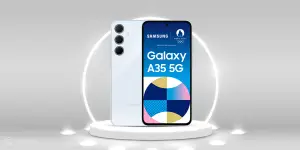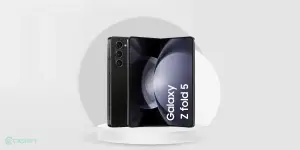When your computer doesn’t start, it’s a nightmare. Maybe your PC crashed, and you can’t get it back, or perhaps everything was great when you shut it down, but now Windows won’t start for some reason. There could be several causes for this, and it’s even possible that the issue isn’t with Windows at all, but with your BIOS or even your PC hardware.
We’ll show you how to figure out what’s wrong with Windows when it won’t start up and how to fix it.
Also Read: Tecno Memory Fusion Tech To Be Rolled Out For Specific Devices
How to troubleshoot your computer won’t start?
A PC goes through a number of “won’t start”. The difficulty is made worse because a laptop has two power sources: When there isn’t any AC, the laptop’s battery is used to provide power. So you know right away that if your computer doesn’t switch on right away, it’s because of a power supply problem. You have a power supply problem if the computer looks to be dead. To troubleshoot computer doesn’t turn on, follow the steps given below:
#1 Check battery status
Battery troubles can cause issues with the device on startup if you’re using a laptop. It’s worth trying a different charging cable to see if it helps. Test the cord on another computer to make sure it’s working. Please remove the battery from your system and connect it to a power source. Remove the battery to see whether a hardware issue is at fault. The critical thing to remember here is to test one element at a time. If power issues prevent the computer from starting, it’s crucial to determine whether the battery, charging cable, or other component needs to be replaced.
Also read: How to Check Laptop’s Battery Health?
#2 Try safe mode
Safe Mode is the simplest solution for Windows 10 boot problems.
It’s a different boot strategy that starts your computer with the bare minimum of software installed. Driver and software issues can be avoided using the modified boot method. Surprisingly, booting the computer in Safe Mode can occasionally resolve computer won’t start-related issues. Although it isn’t always evident which programmes operate in Safe Mode, I’ve found it a reliable and straightforward solution.
You can have trouble accessing Safe Mode if your computer won’t start. There are two reasonably simple ways to get started with it.
Method 1: Through Windows Recovery
Some computers that won’t start freeze at the Windows splash screen.
You can force the machine into Safe Mode by interrupting the boot process three times in a row, which will start Windows Recovery automatically. When the Windows Recovery menu displays, perform these steps:
- Choose Troubleshoot, then Advanced Options, and Startup Settings from the Choose an option recovery window.
- You may reset your computer into Safe Mode from the Startup Settings menu, with or without internet access.
Either solution should suffice.
Also read: How to Troubleshoot No Audio on Your Laptop?
Method 2:
You’ll need to make a Windows 10 USB recovery disc if you can’t get into Safe Mode. The recovery disc houses the Windows 10 recovery environment, accessed by pressing F8 during boot. Sadly, Microsoft has decided to deactivate this feature.
A second Windows 10 device and a USB drive with at least 512MB of storage are required to create a recovery drive. You’ll need 16GB of storage to establish a system backup(you’ll have an option to back up system files to the recovery drive).
Create a recovery drive by going to Control Panel > Create a recovery drive.
Then simply follow the on-screen instructions.
You can only boot your computer from the recovery drive if you’ve enabled USB drives to be bootable from the POST environment, also known as UEFI or BIOS. Insert the USB drive into your computer and restart after enabling USB drives as bootable (this may require hitting the reset button by holding the power button down for a few seconds).
Also read: 8 Best SSD Laptops to Simplify Your Task Faster!
#3 Disable Fast Boot
Fast boot is a setting in your BIOS or UEFI that allows Windows 10 to boot up faster by preloading drivers. This can help you troubleshoot the error of the computer won’t start! Windows Update, unfortunately, has the potential to disrupt Fast Boot compatibility. Fortunately, rather than turning Fast Boot on and off within Windows 10, you may do it through your BIOS.
The procedure for accessing the BIOS/UEFI screen varies depending on the computer. You can enter the POST environment by pressing the Delete key while booting. F2 and Escape are two other keys that might work.
The Fast Boot option is usually found under the Advanced settings after entering BIOS or UEFI.
Also read: Video Downloading For Instagram- Top 9 Sites to Download Any Instagram Post.
#4 Repair Update
The repair installation is identical to a factory reset, with one significant difference: it totally reinstalls your operating system. Unfortunately, you’ll need to download the whole Windows operating system and have a working Windows computer with an internet connection to do so. However, this helps you fix the computer won’t start error.
A working computer, a DVD or USB drive, and an internet connection are required for this procedure. In general, you’ll need to download and execute the Windows USB/DVD Download Tool to produce a bootable installer.
This approach is somewhat complicated, but the video below will walk you through it.
Also read: How to Connect Fossil Smartwatch to Android And iPhone?
#5 Check for collateral damages
If your computer still won’t start, check every component on the board for physical damage if everything else fails. Nothing may be initially noticeable, so keep an eye out for anything unusual, such as bent or damaged heatsinks and PCBs.
Static electricity is another problem you’ll encounter when creating a computer. Unfortunately, parts that have been destroyed due to exposure will not always display tangible evidence of damage. If you believe static accumulation is causing a component to fail, you’ll need to replace it with one that works to be sure.
Also read: Stay Connected With the 5 Best Battery Life Laptops!
The computer won’t turn on: Fixed!
After you’ve gone through all of the ways mentioned above, you should have been able to turn on your computer. If fixing the startup or boot record issues doesn’t work, you can restore or reset the PC via the Boot menu or Safe Mode. These solutions, however, may result in the deletion of some recent data, but your computer will start anyway.
Read Also: Apple To Add Unlisted Applications To App Store
You can easily sell phones online or recycle old phones with Cashify! Cashify helps you take of everything from the comfort of your house.
















